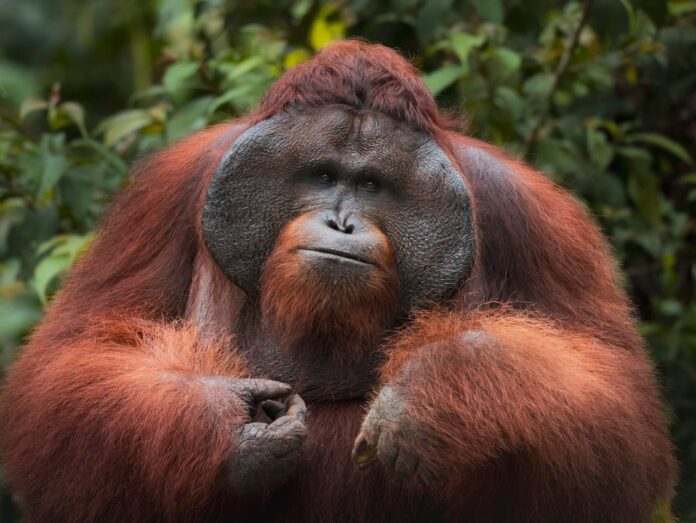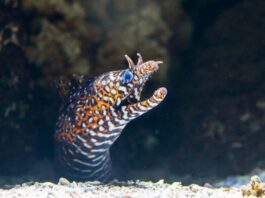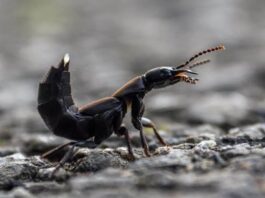Do you know that there are 3 orangutan species out there in the wild? From animations and movies, these arboreal great apes are depicted as wise beings due to their intelligence. Generally, orangutans are the most solitary among the great ape family, except for the mothers and their dependent offspring. They are native to the rainforests of Indonesia and Malaysia, with a small distribution throughout Southeast Asia and South China. We are going to discuss each orangutan species below, so let’s find out more about these primates with me.
1Bornean Orangutan
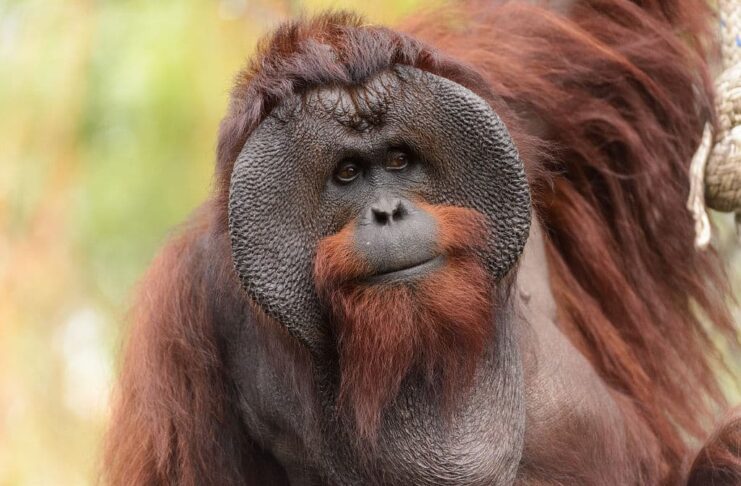
Scientific Name: Pongo Pygmaeus
My personal favorite, Bornean orangutans have this wise appearance that makes me respect them greatly. Bornean orangutans are the largest arboreal apes, and the third-largest apes in the world. A male Bornean orangutan has a body length of 1.2 to 1.7 meters, while the female’s body length is from 1 to 1.2 meters. More than that, their arms can be as long as 1.5 meter,s and they are useful for swinging through the canopy. These orangutans have gray skin covered by a coarse and shaggy reddish coat. Their most distinct feature is the large cheek pads known as flanges that give them a very unique look. Males have larger cheek pads that are composed of a large amount of fat and muscle. Meanwhile, females’ cheek pads are smaller and are mostly composed of muscle.
This orangutan species is endemic to the island of Borneo, living in montane rainforests and tropical rainforests. They inhabit primary and secondary forests where they move long distances to find tree-bearing fruits. Their most favorite fruits are durian and wild figs. Apart from fruits, their diet also consists of bird eggs, flowers, fungi, honey, insects, leaves, seeds, and spider webs. Bornean orangutans are not territorial, but they will display threatening behaviors when meeting other males in overlapping territories. Adult males are extremely solitary, and they only socialize with females to mate. They are very intelligent, and they have been observed to use tools for various activities. Those include using a leafy branch as a bee swatter, and a bunch of leafy branches together as an umbrella during the rain. They even use a pad of leaves to hold spiky durian.
Threats
Bornean orangutans are endangered; they are totally dependent on trees for survival, and forests are degrading. The population of these great apes is facing the threat of habitat destruction due to illegal logging. More than that, the conversion of tropical forests to agricultural land also affects their number.
2Sumatran Orangutan
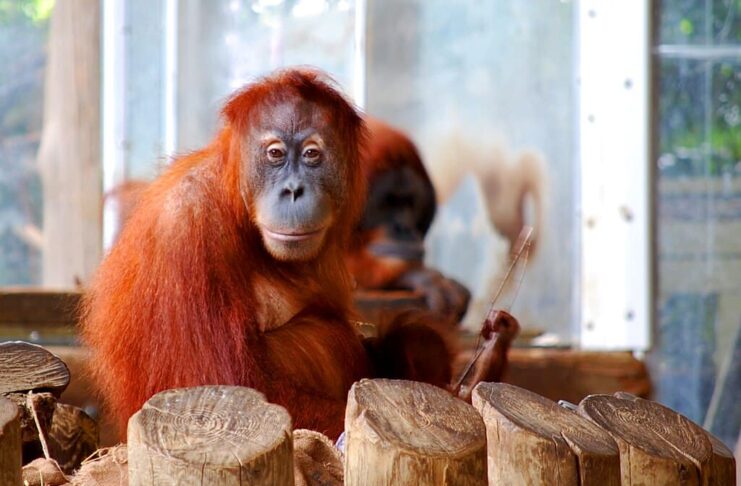
Scientific Name: Pongo Abelii
Looking very similar to the Bornean orangutan but larger, a Sumatran orangutan can grow up to 1.7 meters tall. However, females are a lot smaller, with an average height of only around 90 centimeters. Taller height also means longer arms, and their arms can reach a length of 2.25 meters. Sumatran orangutans have a slender build and longer hair, and they have longer faces than the Bornean species. The hair is fine, long, and red, and it covers both their bodies and faces. Males of this species also have large cheek pads, and these pads are covered with fine white hairs. The most fascinating part is that there are two morphs of adult orangutan males, the flanged and unflanged males. The latter looks similar to females, and they are smaller and more agile than the former.
Just like the name suggests, this orangutan species is endemic to the island of Sumatra, strictly on the northern side. These great apes inhabit primary tropical lowland forests, mostly in mangrove forests, riparian forests, and swamp forests. They are almost exclusively arboreal as they live among tropical rainforest trees, and they rarely travel on the ground. Another interesting thing is that they are more social than their Bornean cousins. It is common to see groups of Sumatran orangutans come together to feed. Sumatran orangutans love figs and jackfruits, and they also eat other fruits like breadfruit, durians, and lychees. Along with that, they also feed on bird eggs and small vertebrates. This orangutan species is also very intelligent, and their tool-using skills are quite interesting. They use a stick to dig in tree holes for termites, poke a bee’s nest wall, and pry food from difficult places.
Threats
This orangutan species is even rarer than the Bornean orangutans, and they are currently critically endangered. Forest conversion, fragmentation by roads, and logging are some of the major threats to their population.
3Tapanuli Orangutan
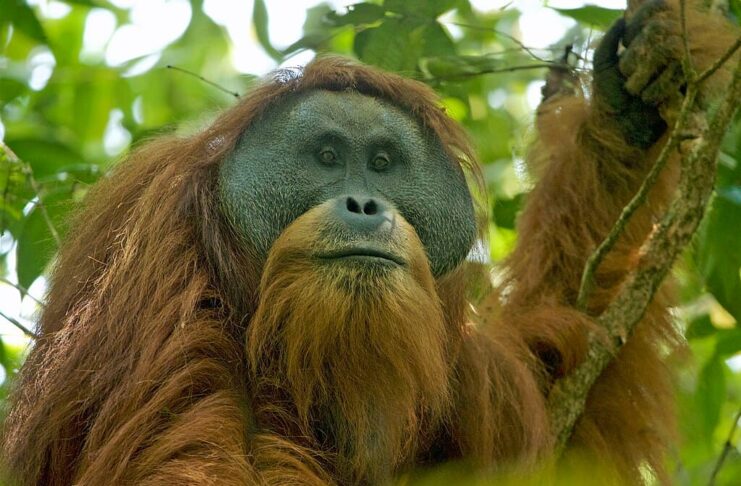
Scientific Name: Pongo Tapanuliensis
Probably looking the wisest with that long beard, this is the latest discovered orangutan species. While the appearance is similar to their cousins, Tapanuli orangutans are slightly smaller in size. The males are 1.3 meters in height while the females are around 1.1 meters tall. Tapanuli orangutans have frizzier and thicker fur, along with a smaller head with a flatter and wider face. Along with that, they have prominent mustaches and large flat cheek pads covered in fuzzy hair. Another skill that they also share with the other two orangutan species is tool use. Tapanuli orangutans also use handmade tools to help them when drinking and eating. They use sticks to collect small insects, and they use leaves as cups to collect water to drink from.
Tapanuli orangutans inhabit tropical and subtropical moist broadleaf forests in the south of Lake Toba in Sumatra. They are found in dense tropical and subtropical broadleaf forests in South Tapanuli, where they also live in mountainous forests. While also feeding on fruits like durians, figs, lychees, and mangos, this one also has another unique appetite. Tapanuli orangutans like feeding on caterpillars and conifer cones, how strange, right? However, they still feed on usual stuff like insects and small reptiles. And just like other orangutans out there, they are solitary, and they only come together to mate. Males have long calls that boom through their range that are loud enough to attract the females’ attention.
Threats
They have a very small range, and there are fewer than 800 individuals living in an area of around 1,000 square kilometers. Being the rarest great ape species, Tapanuli orangutans are considered critically endangered on the IUCN Red List. At the same time, they are also facing threats from habitat destruction, hunting, illegal wildlife trade, and more.
Related Post: Most Dangerous Primates

